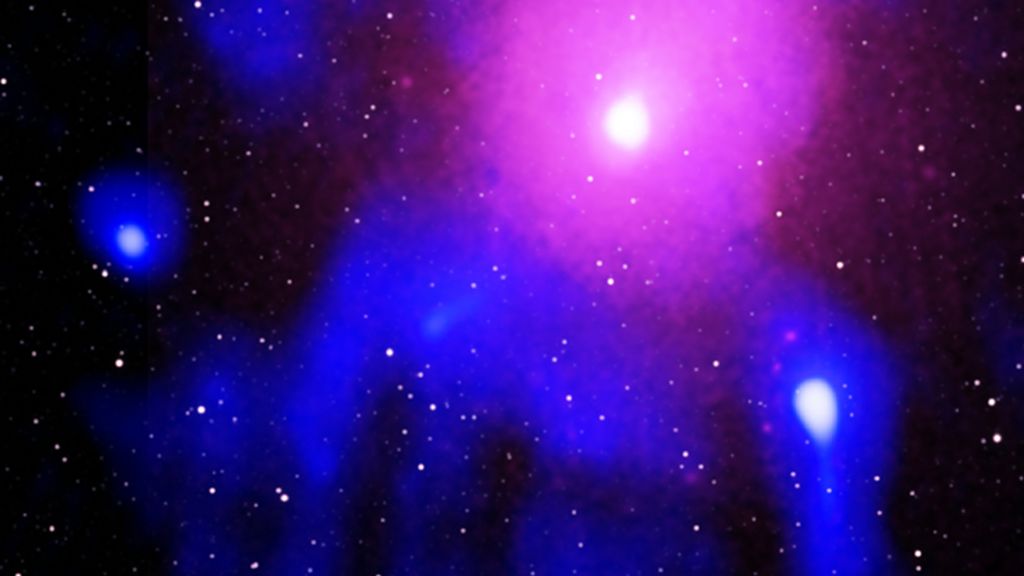Largest explosion in the universe detected
 |
| Picture credits: X-ray: NASA/CXC/Naval Research Lab/Giacintucci, S.; XMM:ESA/XMM; Radio: NCRA/TIFR/GMRTN; Infrared: 2MASS/UMass/IPAC-Caltech/NASA/NSF |
Astronomers have detected the 'biggest explosion since the big bang' using high power telescopes:
NASA's Chandra X-ray Observatory, the ESA's XMM-Newton, the Giant Metrewave Radio Telescope in India and the Murchison Widefield Array in Australia.
This explosion has easily surpassed the previous record held by an eruption from a cluster named MS 0735.6+7421 in which 'a mass of about 300 million Suns was swallowed'. This latest outburst is said to be 'five times bigger than any other known explosion'. Calculations suggest that approximately 5 x 1054 Joules of energy would be required to cause an explosion of this magnitude. The calculated amount of energy involved is around 9 x 1033 times more than annual global energy consumption (5.8 x 1020 Joules).
The explosion was caused by vast amounts of matter falling into a supermassive black hole sitting at the centre of the Ophiuchus galaxy cluster 390 million light years away. The black hole 'spins and distorts space-time'. During this process, the matter is 'diverted into a powerful jet speeding away from [the black hole]'. In this case, it 'cut a hole in the cluster plasma' which is the 'hot gas that surrounds black holes'. This hole is 'about 750,000 light years wide' and according to Simona Giacintucci of the US Naval Research laboratory, around 15 Milky Way galaxies could fit in it. Surprisingly the explosion occurred very slowly, 'over hundreds of millions of years'.
Many scientists do not know why this explosion was so large especially considering that the black hole is no longer active which poses many questions. Melanie Johnston-Hollitt has recognised that 'more data will be needed to answer the many remaining questions this object poses'. The Murchison facility had 2048 antennae in its first phase when the explosion was detected. It will soon be expanded to consist of 4096 antennae which will make it 'ten times more sensitive'. This is promising news as it increases the likelihood of finding similar eruptions.
Report of the findings: https://www.icrar.org/wp-content/uploads/2020/02/2002.01291.pdf
Report of the findings: https://www.icrar.org/wp-content/uploads/2020/02/2002.01291.pdf
Supermassive black holes
A black hole is defined as 'a region of space-time that is so dense that nothing, not even light can escape from it.' Supermassive black holes are the largest type of black hole which sit at the centre of all galaxies and 'weigh the equivalent of millions or billions of suns'. However, they are very small in comparison to the galaxy. Manda Banerji of Cambridge University compares the situation to having a grain of sand at the centre of the Earth.
Black holes grow by swallowing matter. Material around a growing black hole shines very brightly as a quasar emitting a lot of radiation which can be detected. Therefore, black holes are observed during feeding phases.
Sources:

Comments
Post a Comment